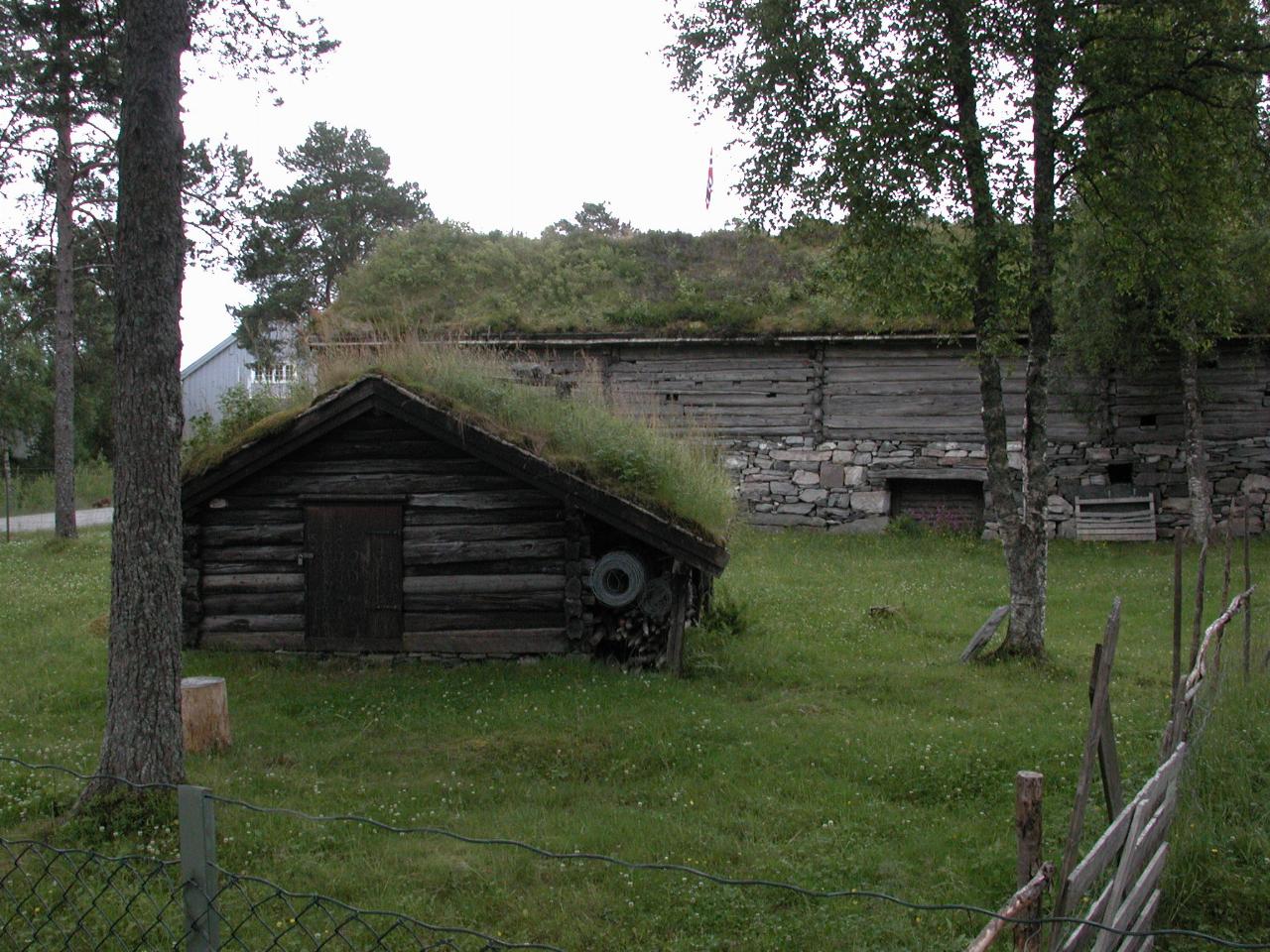
The Museum contains many old log houses and interiors from the whole region to illustrate cultural developments among the local farming community durng the last 400 years. The collection includes open-hearth houses, smokehouses, traditional storehouses, outhouses(!) and a small chapel.

A couple of old buildings, using the time honoured grass roof. It is (perhaps surprisingly) quite waterproof, as well as providing good insulation from the cold of winter.
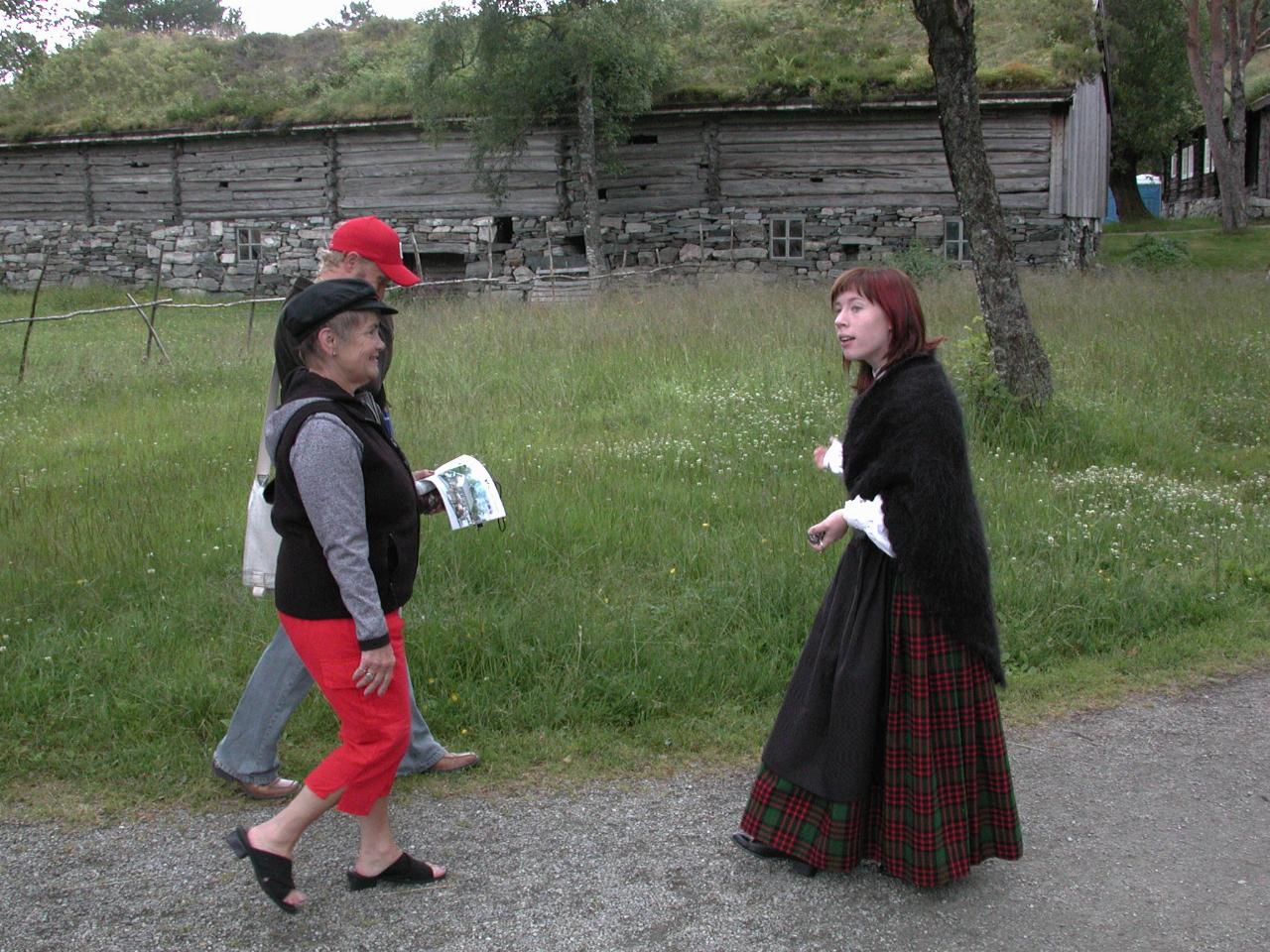
Our guide (dressed in period costume) with Barbara and Jake.
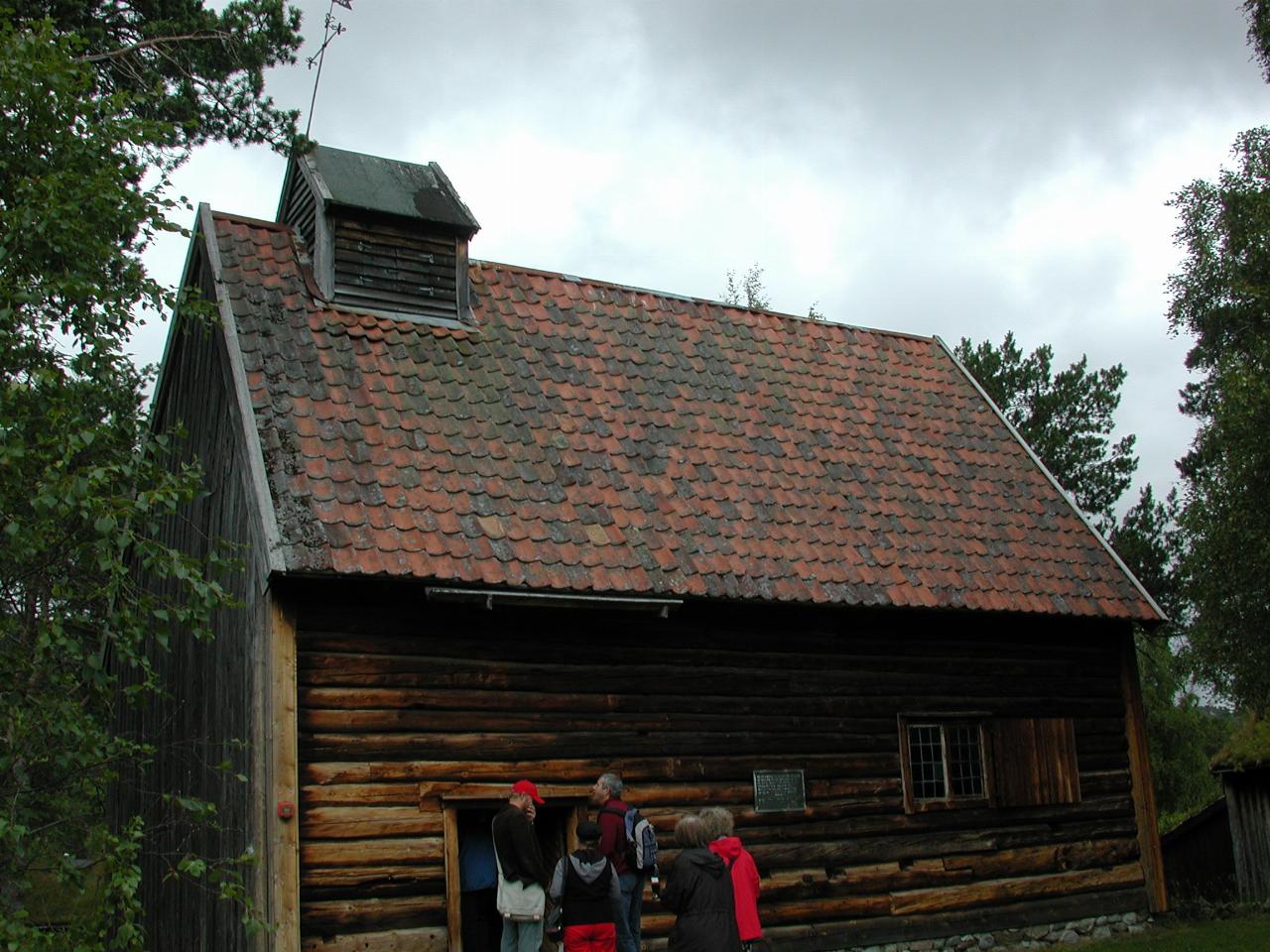
The chapel is not used for regular services, however it is available for weddings. Note the low height of the door. Populations are growing taller, but also a smaller door provides less heat loss.
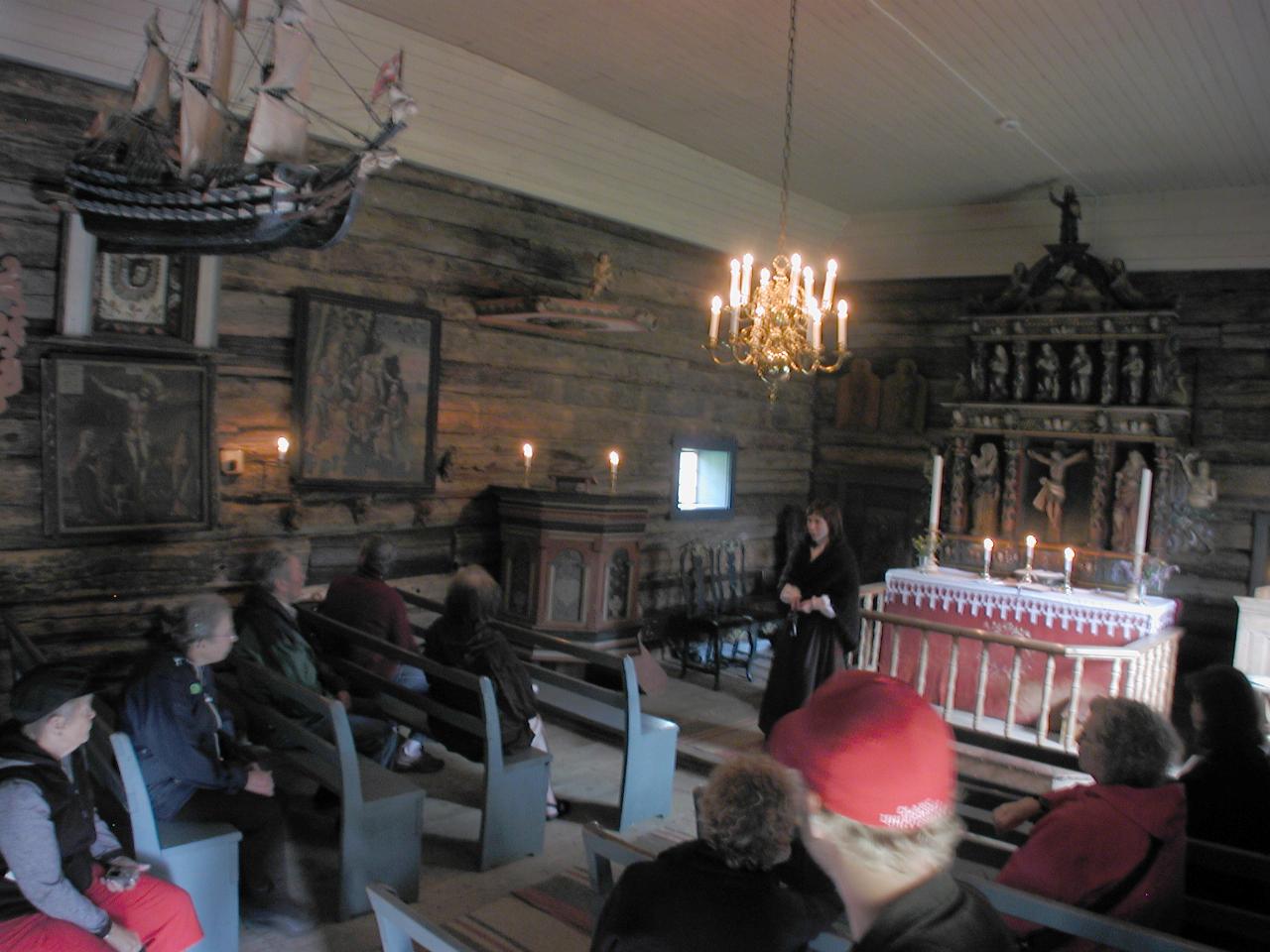
Our guide points out some of the features. Note the ship in the upper left - we saw this first in Copenhagen, but it is apparently popular throughout Scandinavia, with its seafaring roots.
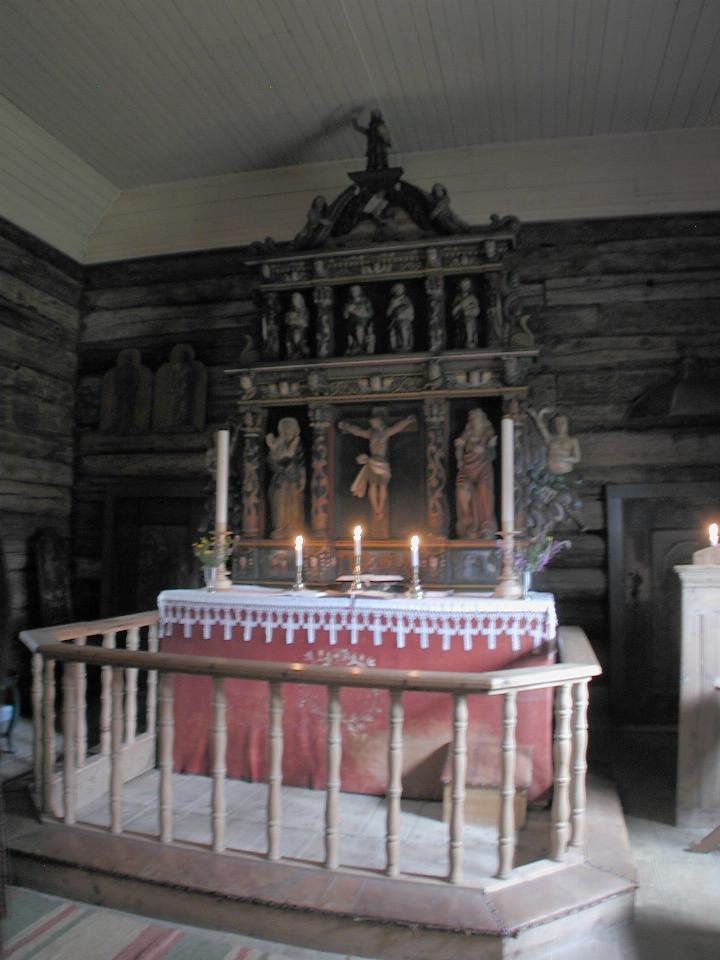
The altar - bet you'd never guess that.
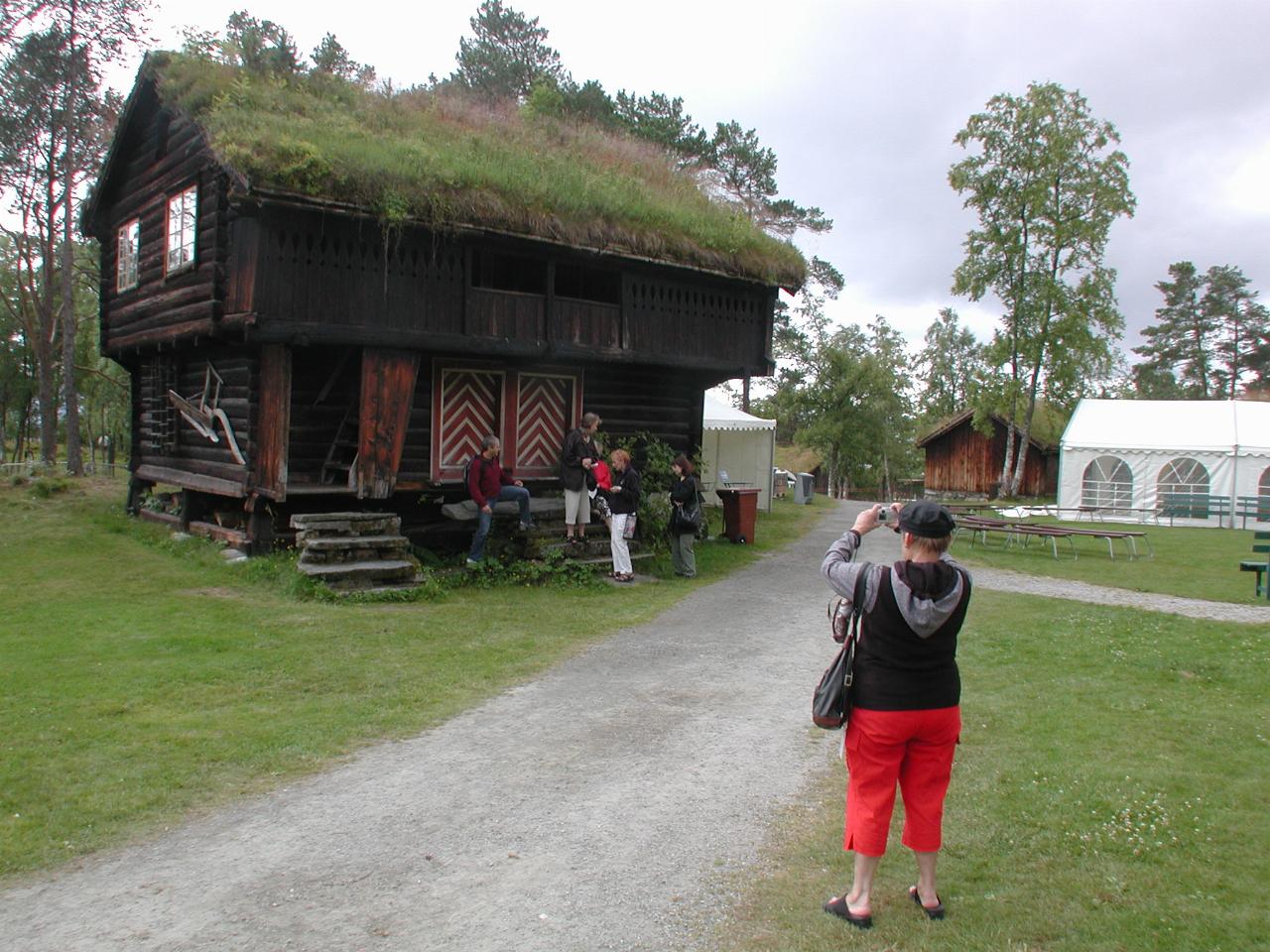
Ah, the photographer getting ready to take a picture of us. But I got in first! Behind us is a somewhat more elaborate home. I didn't go inside, but I'd guess that upstairs was for living, and downstairs for storage, perhaps including animals.
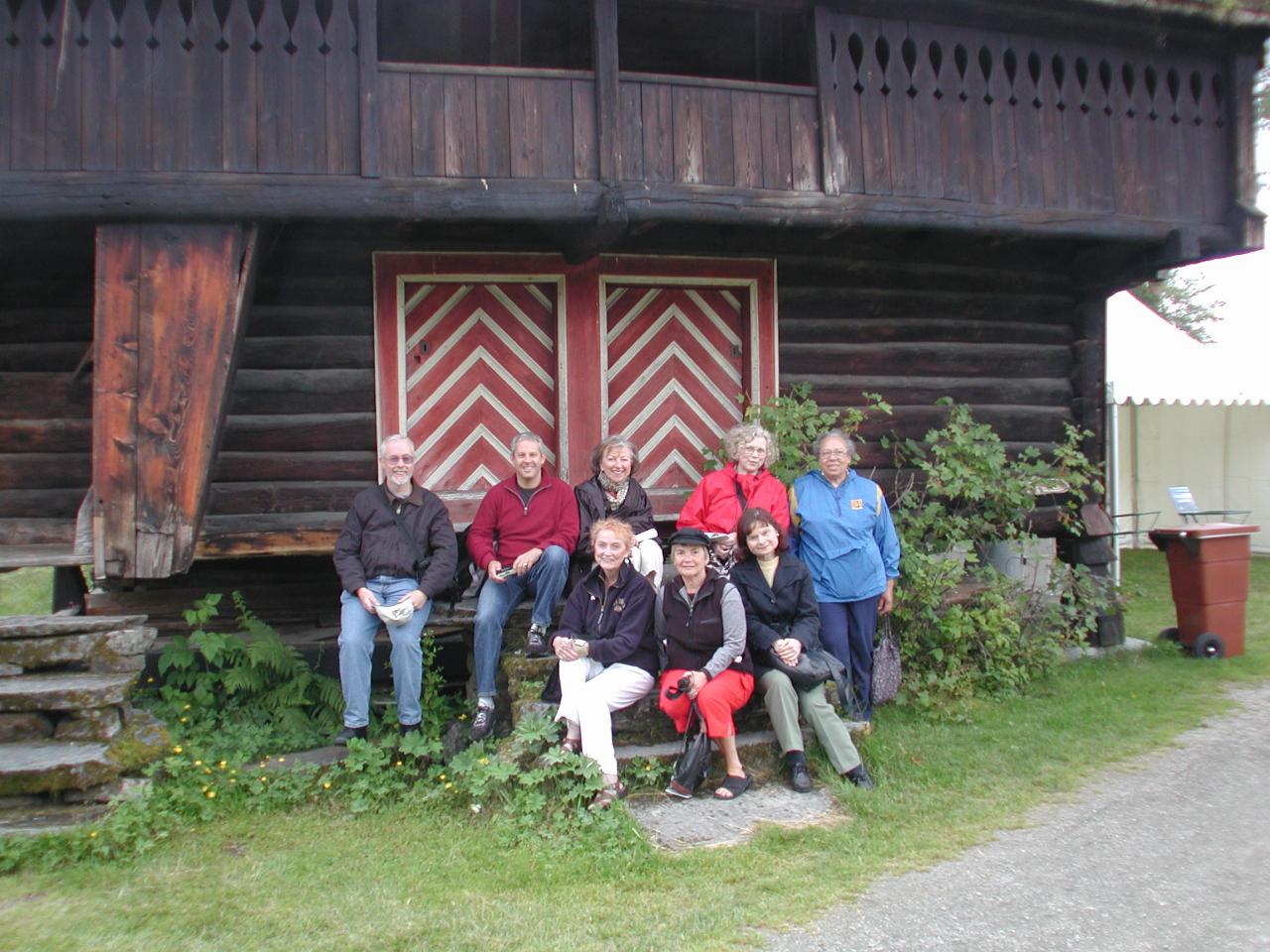
Ah, a happy group! Front row, left to right: Beverly, Barbara and Signe. Back row, left to right: Lindsay, Joey, Annette, Karen and Maria. Tom and Jim did not join us for this tour. If this hasn't turned you off, there's also a close up. Oh the humanity!
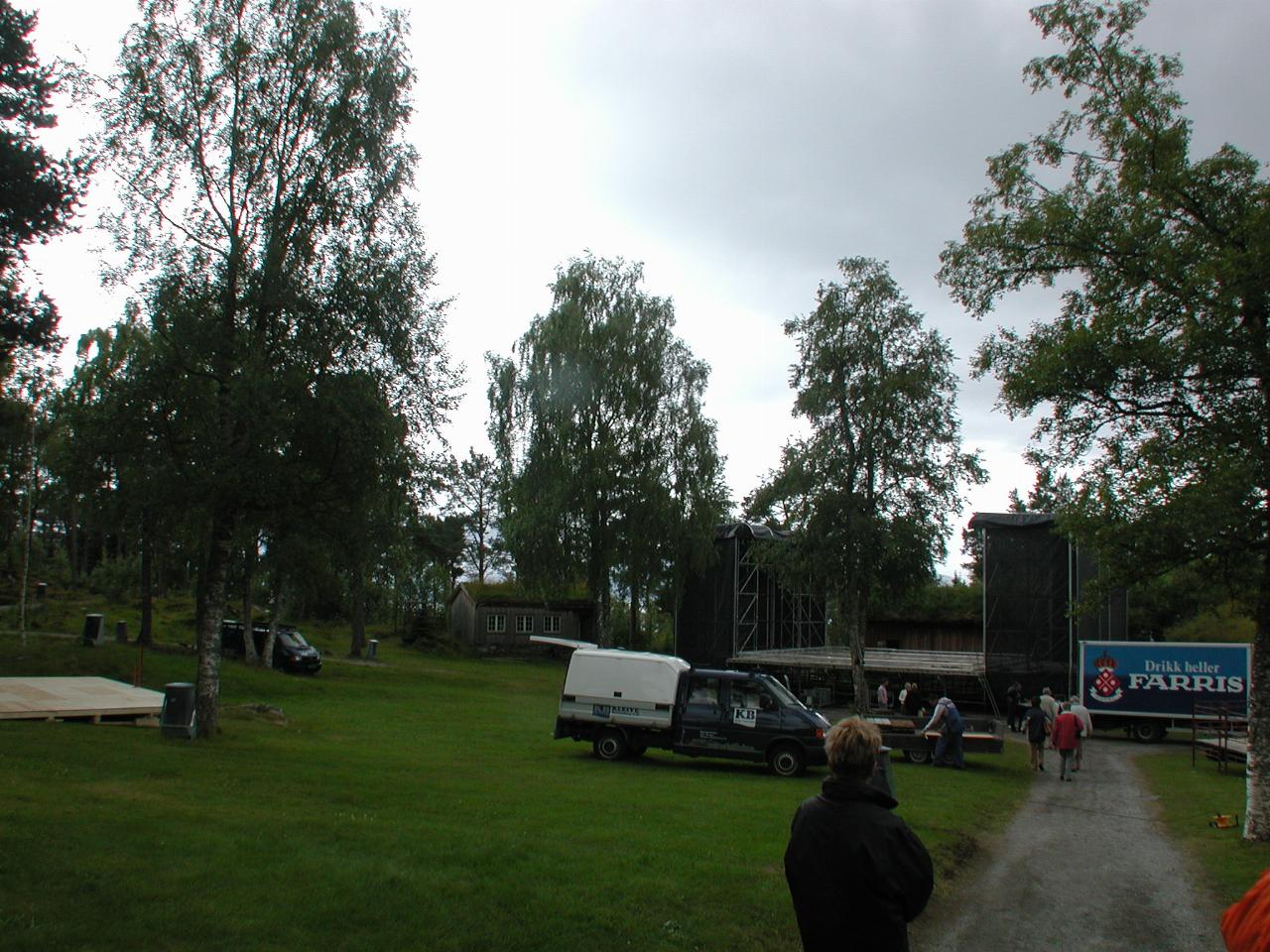
This stage was being set up for a Stevie Wonder concert in a day or two. Actually, a night or two - it was an evening concert. And the museum can hold 10,000 concert goers. Nonetheless, it must be somewhat crowded!
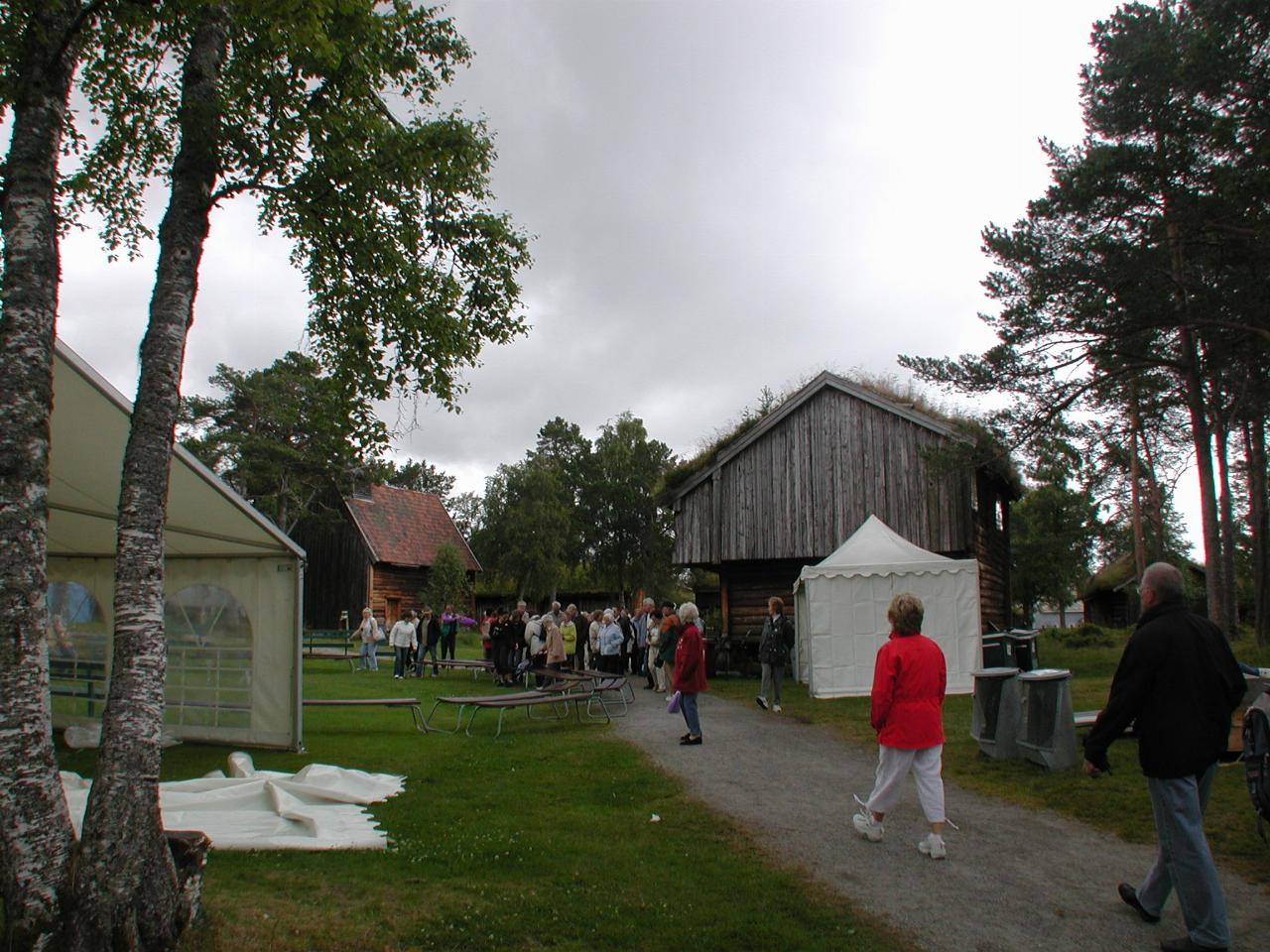
But time to head to the dancing exhibition. As this is only performed when there is a cruise ship in town, I presume there must be one.